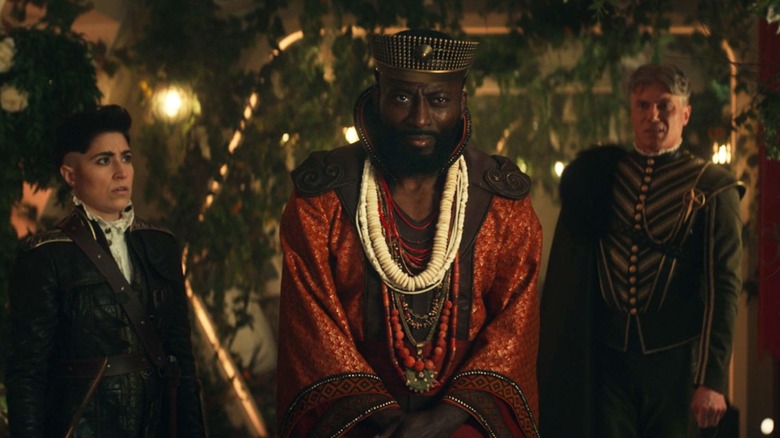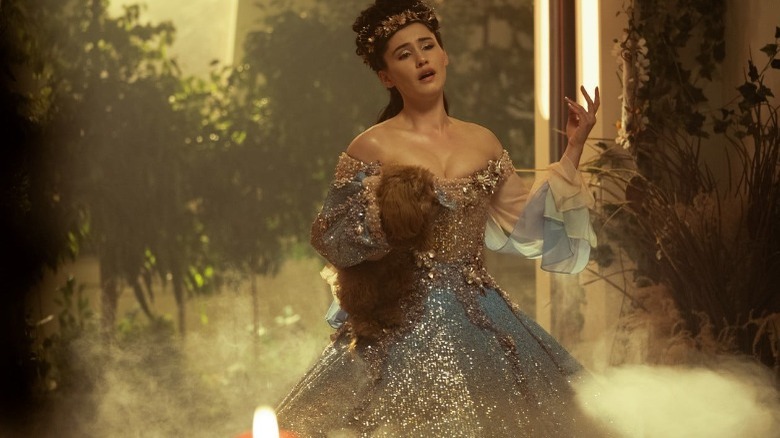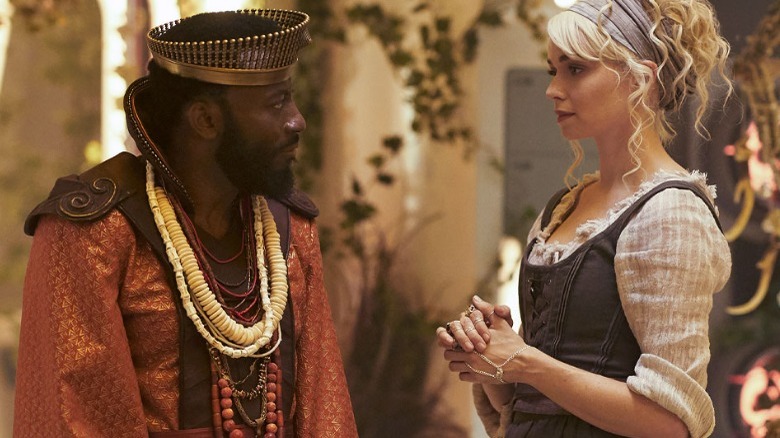Star Trek: Strange New Words Is A Reminder That 'Filler Episodes' Can Be Great
This post contains spoilers for the latest episode of "Star Trek: Strange New Worlds."
Once upon a time, TV shows ran for very long seasons. Before the super-sized nine episode "Stranger Things" arcs and the six-episode Marvel standard, television had a lot of space to fill. When shows like "Alias" and "The West Wing" were appointment television, they kept viewers hooked across 22 episode seasons. Go back further, and the count gets even higher. When "The Dick Van Dyke Show" premiered in 1961, for example, it was with a whopping 30 episode first season.
When long TV seasons began to die out, so did filler episodes. For years, week-to-week TV watchers lamented filler episodes as momentum-killers, needless side quests that dragged down the whole season's legacy by spending airtime on something less-than-important. Fans of early aughts television can recite the worst offenders with a groan, from the chapter of "Lost" that explained Jack's tattoos to "The Great Divide," the "Avatar: The Last Airbender" episode that saw Aang helping two extremely annoying factions cross a canyon. But here's the thing: filler episodes, despite their enduring bad reputations, are usually still important, and often can be great.
"Star Trek: Strange New Worlds" is a marvel on several levels: it's funny, clever, and heartfelt, but it's also a successful return to the franchise's episodic days. Gone are the dramatic overarching plots of recent Treks, replaced instead with weekly missions that, if not for the character developments happening around their edges, could almost be presented in any order. "Star Trek: Strange New Worlds" makes plenty of room for hijinks and joyfully one-offs even in a short 10-episode season. It also might be the streaming era's best evidence in defense of filler episodes.
The unique joy of the episodic plot
The show's latest hour, "The Elysian Kingdom," is an extremely fun and immersive high fantasy diversion. In it, Dr. M'Benga's (Babs Olusanmokun) daughter, Rukiya (Sage Arrindell), melds minds with a passing nebula that transforms the Enterprise crew into her personal imagination playground. A milquetoast version of Captain Pike (Anson Mount) parades around with a silly hair part and even sillier facial expressions. La'an Noonien-Singh (Christina Chong) wears an ornate, jewel-encrusted dress and coos to the tiny dog she carries everywhere. Spock (Ethan Peck) is a long-haired wizard who looks like he's doing a D&D cosplay. It is, in a word, hilarious.
With "The Elysian Kingdom," the latest "Star Trek" series reminds us that it's okay to have fun for fun's sake. It follows in the vein of great '90s genre shows like "The X Files" and "Buffy the Vampire Slayer," that could take a potentially thin question — "What if everyone lost their memory?" for example — and explore it fully and enthusiastically for most of an entire episode's runtime. While TV comedies often still make room for goofy standalone experiments, indulgences like this one seem vanishingly rare on the drama side of television.
Aside from just being a blast, "The Elysian Kingdom" is also a great reminder that what we call filler episodes often still have purpose. In fact, they can sometimes be among the most meaningful outings in a series. We may look back and remember the most irksome filler episodes, but sometimes, filler episodes turn out to be among the best a series has to offer. For every "The Great Divide" audiences endure, there's a chance at getting something like "Tales of Ba Sing Se," a beautifully character-driven outing that's one of the best episodes of "Avatar: The Last Airbender."
'Filler' can be made of something great
Therein lies the truth of the filler episode: in most cases, it's not a throwaway hour, but a chance to develop characters without the restrictive boundaries and pressure of a serialized plot. As a phenomenon that's largely unique to television, the filler episode is a prescriptive title given based on the perceived inaction of any given episode — despite the tremendous character growth that often happens in the small moments. The relative extinction of the filler episode seems to be a sign of reward-based viewership that's focused on the destination, not the journey.
By the end of "The Elysian Kingdom," it turns out that the fantasy playtime is actually the exact opposite of meaningless: it's the last bit of time M'Benga will spend with his daughter before she leaves to have a better life with the nebula that can sustain her despite her progressive illness. The final moments of the hour are complex and bittersweet, calling to mind questions about mortality and quality of life that are perfectly in line with the thoughtful and morally challenging blueprint "Star Trek: Strange New Worlds" has laid out so far. The show may have just spent most of its runtime in a period piece romp, but it also just delivered one of its most powerful, emotional moments to date.
The filler episode, long-maligned, can be a bastion for creativity, imagination, and sly but vital characterization and worldbuilding. It can also just be silly and entertaining. Either way, "Star Trek: Strange New Worlds" is a reminder that, in a world of endless tightly plotted prestige dramas, there's something wonderful about a show that simply takes the time to have fun.


